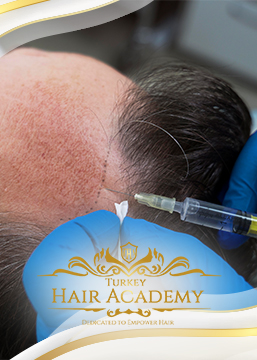
What to do after your surgery? What are the precautions to take after a hair transplant? We have listed some post-operative advice to optimize the results of your hair transplant.
Contents
The postoperative regrowth processes
Phase 1: small crusts (the size of a pinhead) will form on the skin and then spontaneously detach. They will disappear after about ten days.
Phase 2: After one month, most of the hair on the grafts will fall out. The transplanted hair will then start to grow again 3 months after the operation. It is important to keep your spirits up during this stage, which usually leads you to believe that nothing has changed.
Phase 3: From the 3rd month, hair growth begins. Over the months, the density will improve considerably. It will be necessary to wait between the 9th and 12th month after the operation to have a final result. The transplanted hair will not fall out anymore.
How to maintain your hair implants
To obtain an optimal result, you will need to follow some postoperative advice listed below:
1) Convalescence
Plan a period of 5 to 10 days of professional unavailability, depending on your professional activity.
2) Dressing
We advise you to wear loose clothing that can be opened (such as a shirt or a zippered garment) during the first week to avoid tearing the grafts during dressing and undressing.
3) Bedtime position
We advise you to sleep on your back, on your sides or preferably in a semi-sitting position and to raise your head (you can roll a towel around your neck or put a pillow underneath) during the first 10 days. This is to avoid swelling of the forehead and rubbing of the grafted area on the headboard.
4) Hair washing
As soon as you return home, the head should be washed every day using the products provided by the clinic (see photo below). Be careful when washing, here are the steps to follow:
- The foam spray should be applied to the skull, without touching the hand, and act for 45 minutes.
- Rinse gently. The shower jet should not have any pressure on the scalp, it is advisable to put the hand between the jet and the head so as to let the water flow gently on the grafts the first 2 days.
- Shampoo, rinse and let dry in the open air
The Things to Avoid in the first month
-
- Exposure to the sun (wear a hat in case of intense sunlight), in order to avoid discoloration of the skin around the grafts. No U.V. sessions, sea bathing, swimming pool, sauna or hammam
- Avoid sports, including water sports, and violent exertion as this increases blood pressure and ejects the grafts. Also avoid excessive sweating for 15 days and dusty places.
- Wearing a motorcycle helmet, hats and sports where the head is used (e.g. soccer) should be avoided as much as possible for the first 6 weeks. After the transplant you can wear a hat or cap if it does not touch the implants.
For styling:
- Avoid blow-drying (hot air), overly aggressive hair products as well as coloring and styling products (hairspray and gel)
- For the donor area: you can use the clippers after 15 days.
- For the transplanted area: you can make your first cut after 3 months.
The things you should avoid on the first week:
- Dishes that are too spicy because the body’s reaction to this type of food could interfere with the healing process.
- Drinks such as coffee, coca-cola or alcohol during the first week following the procedure (especially in relation to the treatment you will be prescribed) and limit your consumption of cigarettes.
- No sexual intercourse for 8 days.
- Any rubbing of the grafted area could tear the grafts. During the first week, avoid any movement that could increase the blood pressure in the head (leaning the head forward or other).
Which vitamin to take after a hair transplant?
To see the final result and regain a beautiful hair density, you must wait several months. The grafts will grow and fall out like natural hair. This is completely normal. You want your new hair to grow as fast as possible? Nothing could be more natural! To allow the grafts to grow in optimal conditions, take care of your diet. For faster hair growth, take a course of food supplements containing vitamins A, B, C and E, iron, zinc and copper.
The post-operative follow-up, an appointment not to be missed
After the procedure, you will have to visit the hair center where you had your hair transplant done several times. This is essential to monitor the progress of the hair transplant.
Is there a dressing after the hair transplant?
Generally, the donor area needs to be protected by a bandage for 1 or 2 days. This bandage is to be gently removed by soaking it in water.
However, it is not necessary to put a bandage around your skull, as can be done in other clinics. This is unnecessary and even “dangerous” for the implanted grafts, as they must not be used or come into contact with anything during the first few days following the procedure.
What are the side effects that can be seen after a hair transplant?
The side effects following a hair transplant are more “embarrassing” and unpleasant than dangerous to health. The patient may experience itching, swelling or some bleeding of the scalp.


